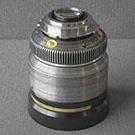-
Posts
1,828 -
Joined
-
Last visited
richg101's Achievements

Long-time member (5/5)
1.1k
Reputation
-
Thưa Ngài
Tôi có biết đến ngài qua một số diễn đàn hack nex
Tôi đang có 2 máy của Nhật đó là sony SLT A33 và A55
Tôi từng biết có 1 bản hack của 2 máy này trên nex-hack, nhưng hiện tại đã link đã chết.
Có bạn nào còn lưu trữ bản A55.2.1jan2.Eng.zip
Xin hãy giúp đơn tôi, và gửi giúp tối link dowload hawocj email: dungmxdk43@gmail.com
Cảm ơn các bạn rất nhiều -
Hi there, I am wondering why you say that the MC iscorama isnt worth buying? Thank you, any info much appreciated.
-
Hi Rich
I'm contemplating the KineMax for a feature I'm in the process of getting funded. I was considering getting their KineMount with the Nikon KineEnhancer...I own 3 Nikon AF-S F2.8 ED zooms...the 17-35, 28-70 and 80-200...all with aperture rings. I also own the Sigma F1.8 18-35 and 2 Tokinas...all in Nikon mount. I know you built a custom speed booster for Rob, and my questions are (1) Was it a Nikon mount (2) Any thoughts on the optical quality of their Enhancer and (3) If not a Nikon mount for Rob, would you be interested in manufacturing a Nikon Booster for my KineMount. As a lot of the cheap boosters degrade the image, and in my view the image on the KineMax is what I'm looking for at an incredible price, I want to make sure there are no weak links in the chain, or else I will opt for the non optic adapter.
thanks in advance,
Fritz






